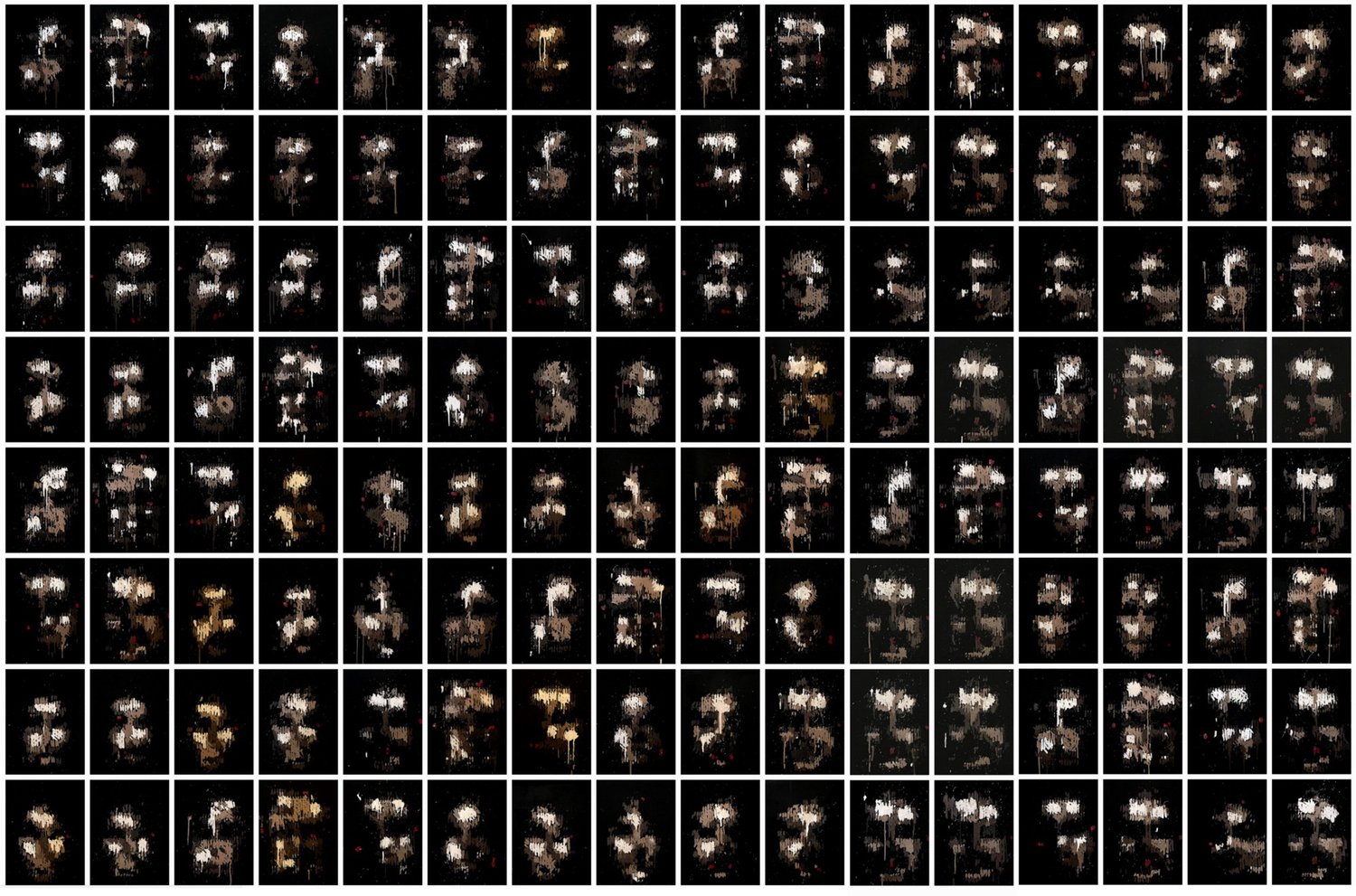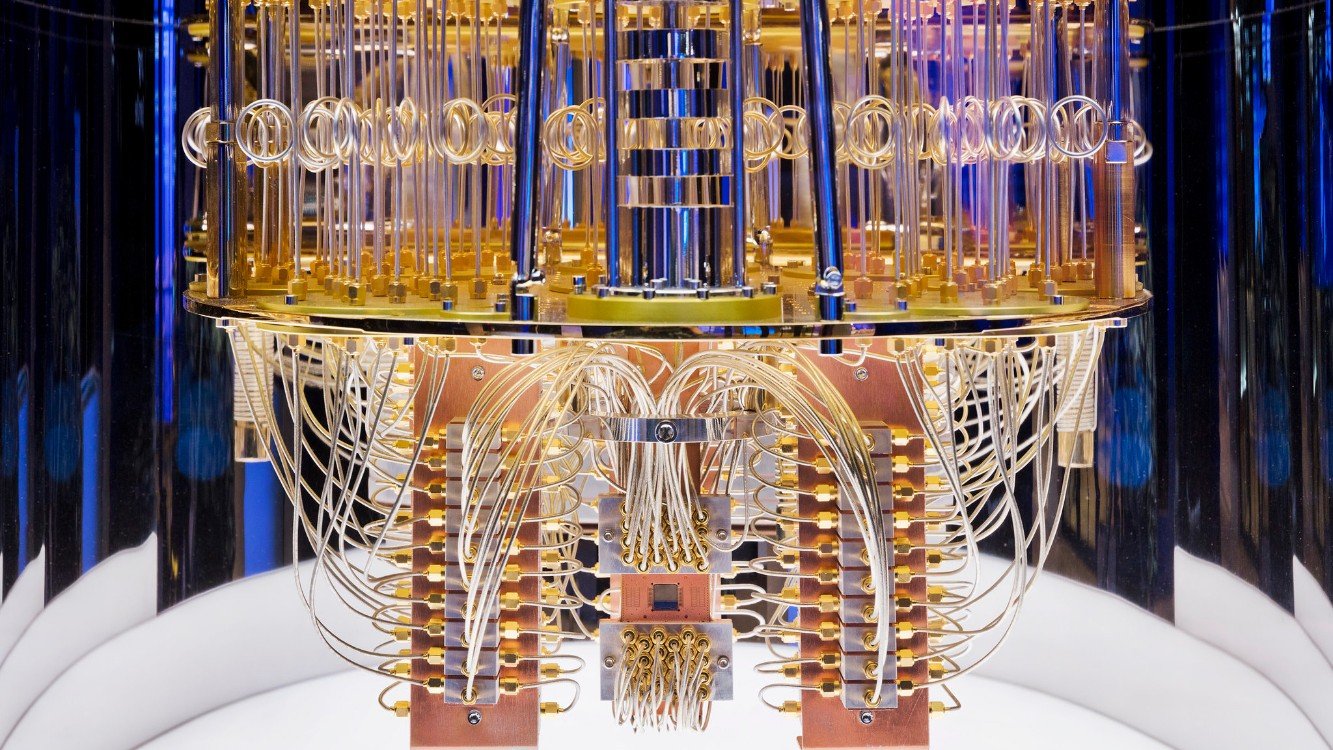
Clip from “Quantum Skull”
Going deep into quantum art: Quantum Skull by Pindar Van Arman and Russell Huffman
Too often an emphasis is placed on firsts in cryptoArt, when firsts rarely matter. Depth is what is important.
Claims of being a first are made to give an artwork special provenance. Someone might claim a project is the first poem minted on the blockchain, or the first PFP, or the first generative art piece. Unfortunately, despite the frequent emphasis put on being a first, almost none of the claims are true.
Actual firsts typically occur in the research world and are rarely realized at the time they occur. For example, somewhere on this planet there was definitely a first piece of computer generated art. Where is it? Well, it is doubtful that this artwork is in a museum or is even known. This is pure conjecture on my part, but the piece was probably made by a scientist who had access to an early computer and generated some sort of report that ended up looking aesthetically pleasing. Perhaps they then pinned this theoretical first piece of computer generated art to the lab’s wall and eventually forgot about it. Was it high art? No, but it was a first that has been lost to history, and that is fine.
And while Quantum Skull, a SuperRare 1/1, does include a number of technical firsts, they will not be addressed because firsts are not a substitute for depth, which is what is truly important, and why it was made.
Much of my art, including Quantum Skull, is on the cutting edge of various technologies including AI, robotics, GANs, and quantum computing. However, as mentioned its significance is rarely due to the fact that it is the first, but rather that it looks deeply at the technology asking cultural questions that have not yet been fully explored. For example, with my popular AI Imagined Faces series in 2018, I painted portraits from GANs and asked if AI could be as creative as humans? This question and in depth exploration of portraiture was awarded First Place in the international Robot Art 2018 competition and became a highly sought after NFTs series that is held by some of the biggest artists and collectors in the space including XCOPY, Cozomo de’ Medici, Hackatao, SonOfABeach, and Matrix. The general consensus that has come about from this series is that while AI can not make art, it can be creative, which was an extremely controversial thought at the time, and remains so to this day.

128 AI Imagined Faces painted by one of my robots.
With Quantum Skull, I am once again going deep into a new concept and exploring both its technological and cultural significance. Midway through creating the artwork, I found myself in touch with quantum artist Russell Huffman and realized that to go as deep as was needed, we needed to team up. Talking with Huffman, I realized why the piece couldn’t just reference quantum concepts, but had to be generated intentionally on an actual quantum computer. We both discussed the fact that we are in a moment, a brief moment in history, where we learning how to leverage the observation of atoms to achieve massive processing power. This processing power has the potential to be so powerful that it will probably break the blockchain’s cryptographic security, which is wonderfully ironic as the piece is being minted on the blockchain.
More important, however, is that quantum computing takes advantage of several key concepts including quantum superposition, entanglement, and interference. Each concept is wonderfully complex and worth examining at depth, though the easiest way to distill everything down is that particles don’t really exist in a fixed time or place. Instead, everything exists as probabilities in multiple positions and states at once. Only through the act of observation, where we try to measure a particle, does a position get revealed. When not being observed, a particle has an infinite array of possibilities. This is often misinterpreted by Hollywood pop culture to mean that there is a multiverse with an infinite number of universes where every possible thing that can happen has happened. This sounds weird and far fetched, but in actuality it is much weirder than even this as is explored in Quantum Skull.

Interior of an IBM Quantum Computer – photo courtesy of IBM.
Actual measurements of quantum superposition on ibmq_montrealwere made by Huffman and used to procedurally generate the piece. When you look at it, you can see an 8bit skull moving from place to place, existing in superposition until observed, then revealing it was elsewhere all along. Its form mimicking the generative process that created it. Beyond this, it is also a physical painting created from observation at an atomic level.
The subject of the piece is taken from my upbringing in the 8bit digital world of early video games, as well as references to early cryptoArt including the aforementioned AI Imagined Faces series. On a personal level, it includes my search for meaning, which oddly enough, I often look for in video games which are often as real for me as going outside.

Beyond form and subject, however, it goes even deeper and asks questions about the nature of reality. My favorite among many being:
If atoms only exist as a probability, and everything is made of atoms, does that mean that everything only probably exists?
Quantum Skull is a work that shows the universe in the only way that makes any sense to me… vague, ambiguous, and only probably there.



Quantum Skull
https://superrare.com/0xd45ea3d9426595f32a4b87f0225022d8d179526c/quantum-skull-1
by Pindar Van Arman and Russell Huffman
Includes:
1) A SuperRare 1/1 NFT
2) A 18”x10” Robotic Painting on Stretched Canvas
3) A MORF AI Artstick for plug and play display on most modern digital displays
Bidding Opens April 18 and closes April 25th at Sotheby’s
https://www.sothebys.com/en/buy/auction/2022/natively-digital-1-3-generative-art/quantum-skull
Art

Curated Conversations: ALIENQUEEN
SuperRare Labs Senior Curator An interviews ALIENQUEEN about psychedelics, death, and her journey in the NFT space.
Tech


Out of the Vault and onto the Chain: the Evolving Nature of Provenance
SuperRare editor Oli Scialdone considers the social experience of provenance and its relationship with community in the Web3 space.
Curators' Choice



Curated Conversations: ALIENQUEEN
SuperRare Labs Senior Curator An interviews ALIENQUEEN about psychedelics, death, and her journey in the NFT space.



